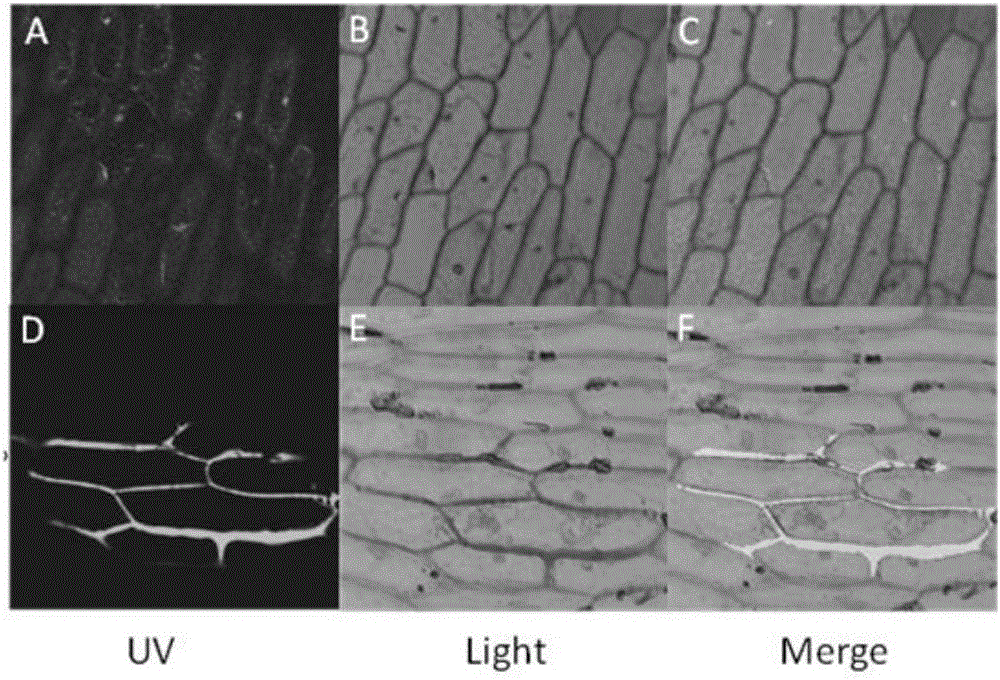Soybean GmSAMS1 gene and application thereof
A technology of soybeans and genes, applied in the field of soybean GmSAMS1 gene and its application, can solve the problems of safety disputes of transgenic plants and their products, and achieve the effect of improving plant insect resistance and insect resistance
- Summary
- Abstract
- Description
- Claims
- Application Information
AI Technical Summary
Problems solved by technology
Method used
Image
Examples
Embodiment 1
[0029] Cloning and Identification of Example 1 Soybean GmSAMS1 Gene
[0030] The experimental material is the cultivated soybean variety "Nannong 99-10", provided by the Germplasm Resources Research Office of the National Soybean Improvement Center of Nanjing Agricultural University. The material is planted in a net room and managed in the field.
[0031] Referring to the sequence information of the mustard SAMS enzyme gene (the accession number in the GeneBank database is AAG17666) and the soybean genome database (http: / / www.phytozome.net / soybean), use bioinformatics methods to analyze, design primers, and conduct soybean Cloning of the SAMS enzyme gene GmSAMS1. The specific method is as follows:
[0032] GmSAMS1 gene ORF forward primer P1: GGGGACAAGTTTGTACAAAAAAGCAGGCT CTACAGAAGTTAAAATGGCCCAAGAAACT (the attB link is underlined) (SEQ ID NO.3)
[0033] GmSAMS1 gene ORF reverse primer P2: GGGGACCACTTTGTACAAGAAAGCTGGGT GAGCAGGTACCTTCTCCCCCTT (the attB linker is underlined)...
Embodiment 2
[0035] Example 2 Study on Subcellular Localization of Soybean GmSAMS1 Gene
[0036] According to the cDNA full-length sequence of the GmSAMS1 that embodiment 1 obtains, utilize Invitrogen company's TechnologywithClonase TM II kit, insert the cloned GmSAMS1 (no stop codon) into the expression vector pMDC83 ( figure 1 ), the ORF of GmSAMS1 was fused with the 5' end of the GFP reporter gene in the pMDC83 vector to form a chimeric gene of GmSAMS1-GFP, and the recombinant plasmid pMDC83GmSAMS1-GFP was constructed. After PCR product sequencing verification, it and the empty vector pMDC83 were transformed into Agrobacterium by freeze-thaw method, and then onion epidermal cells were transformed by Agrobacterium-mediated method. It was found that the GmSAMS1 gene product was located on the cell membrane, while the pMDC83-GFP protein was distributed on the throughout the cell, indicating that soybean GmSAMS1 is localized on the cell membrane ( figure 2 ).
Embodiment 3
[0037] The acquisition of embodiment 3 transgenic GmSAMS1 gene tobacco
[0038] Using Invitrogen's TechnologywithClonase TM II kit, the GmSAMS1 cloned in Example 1 is forward inserted into the expression vector pMDC83 ( figure 1 ), transform Escherichia coli DH5α, and spread the transformation solution on LB solid medium containing 50 mg / L hygromycin + 50 mg / L kanamycin to screen for positive clones. After sequencing verification, the plasmid was extracted, and the pMDC83-GmSAMS1 plant overexpression vector obtained according to Example 2 ( image 3 ). Transform pMDC83-GmSAMS1 into Agrobacterium tumefaciens strain EHA105 (BiovectorCo., LTD) by freeze-thaw method, transform tobacco through Agrobacterium EHA105, extract the genomic DNA of transgenic tobacco as a template, and use non-transgenic tobacco as a template for tissue culture. As a control, the pMDC83-GmSAMS1 plasmid was used as a positive control, and the primers for the target gene were used to carry out PCR prel...
PUM
 Login to View More
Login to View More Abstract
Description
Claims
Application Information
 Login to View More
Login to View More - R&D Engineer
- R&D Manager
- IP Professional
- Industry Leading Data Capabilities
- Powerful AI technology
- Patent DNA Extraction
Browse by: Latest US Patents, China's latest patents, Technical Efficacy Thesaurus, Application Domain, Technology Topic, Popular Technical Reports.
© 2024 PatSnap. All rights reserved.Legal|Privacy policy|Modern Slavery Act Transparency Statement|Sitemap|About US| Contact US: help@patsnap.com










